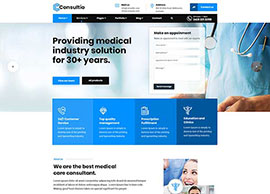What’s More Important, Cash Flow or Profits?
It aids firms in understanding productivity and resource allocation by figuring out each customer’s profitability. Better resource allocation and decision-making are made possible by all of these facts. Gross revenue is the sum of all revenue a business generates, before deducting COGS.
How to Calculate Operating Profit
The objective of developed EVA is producing an overall financial measure that encourages senior managers to focus on the delivery of shareholder value. According to Stern Stewart & Co. the aim of companies’ managers whose shares are traded in the stock market should be to maximize shareholder value. Therefore, financial measurement is an important key used to measure divisional or company performance should be congruent with shareholder value. They claim that compared with other financial measures, EVA is more likely to meet this requirement and also to reduce dysfunctional behaviour. It is because the use of ROI as a performance measurement can lead to under-investment.
Revenue is your total sales, while gross profit shows how much remains after production costs. Measuring your business’s financial performance is crucial when it comes to managing your expenses and increasing profitability. In conclusion, while operating profit is a crucial financial metric, its interpretation requires an understanding of the industry and the specific company’s business model. Product-based companies like manufacturers or retailers, on the other hand, deal primarily with COGS, which are variable and can greatly affect their operating profit. A low operating profit could mean high COGS, perhaps due to expensive raw materials or production inefficiencies, but it could also be the result of strategic pricing to gain market share. Conversely, a high operating profit might signify cost-efficient production, but it could also arise from high pricing, which might not be sustainable in the long term.
- Features like Gantt charts and progress tracking enhance project organization.
- It should be noted that while high operating profit is preferred, it doesn’t inherently signal overall financial health, especially in these low margin industries.
- However, revenue alone doesn’t provide a complete picture; it must be weighed against the costs incurred to produce those goods or services.
- The following steps could further evaluate the different administrative costs to see where the operating ratio can be lowered.
- Because businesses often carry debt, interest payments can reduce net profit significantly.
Social Measures
A higher profit margin signifies that a company is able to generate more profit from each dollar of sales revenue. This can be achieved by effectively managing variable costs, such as labor costs, and increasing sales revenue. A higher operating profit margin indicates a more efficient and profitable operation.
Gross profit will consider variable costs, which fluctuate compared to production output. What Is Profit Measures Of Profit Total revenue includes all the income earned from sales, services and any other sources. It is calculated by adding up all the revenue generated during the time period in question.
What’s More Important, Cash Flow or Profits?
Usually they’ll also pay for advertising as well as the cost of any administrative buildings. Once this is subtracted from gross profit, we arrive at the operating profit. Two ways a company assesses profits are gross margin and contribution margin. Gross margin encompasses all costs of a specific product, while contribution margin encompasses only the variable costs of a good.
Greater investment opportunities
- Profit margins have several categories, including gross, operating and net profit margins.
- Net income equals total revenues minus total expenses and is usually the last number reported on the income statement.
- It includes amortization rates and asset depreciation but doesn’t include taxes, debts and other nonoperational or executive-level costs.
- For example, restaurant profit margins tend to be razor thin, ranging from 3 percent to 5 percent for a healthy business.
- Operating profit, also known as operating income or earnings before interest and taxes (EBIT), is a crucial financial metric that measures a company’s core business operations’ earnings during a given period.
Learn how operating profit impacts financial analysis and valuation, and discover strategies to enhance it. If your business has a margin below industry averages, it’s worth reviewing costs, pricing, and efficiency to see where improvements can be made. Think of it as a way to measure how profitable your business is based on its day-to-day activities—without getting into financial or tax-related adjustments. One of the simplest ways to calculate cash flow is to add up a company’s current assets and subtract that figure from that total current liabilities.
Repayment of a loan is not an expense; it is merely a cash transfer between the business and the lender. If a project is worth taking on, it will have a project profitability index higher than one. This is a project that will cause you to make more of an investment than it will see in profit. Let’s get specific and outline the formula for a project profitability index. The first thing you need to do is identify the cash inflows and cash outflows for the project. It might seem like a task to focus on project profitability after the project has been delivered.
Similarly, total expenses account for all your company’s expenses — whether product-related or administrative and operating costs. To calculate net profit, you start with total revenue (also known as your top line), add all positive cash flow amounts, and subtract all negative cash flow amounts. Olivier Berthier, Moneythor’s CEO, believes their platform and Customer Activation Management offer a definitive solution to the challenges faced by banks in ensuring long-term customer profitability. Customer Profitability refers to the profit a business generates from servicing a customer or group of customers over a predetermined amount of time.
ways to improve profit per employee
The former is often stated as a whole number, while the latter is usually a percentage. Lastly, managers and employees both know what is required to achieve excellent overall performance by breaking down strategic measures to lower levels of the organisation. For example, an organisation might have overall goals to increase productivity by 5 per cent. By breaking down its productivity measures to granular levels of the organisation as part of a balanced scorecard, every member of the organisation will have clear targets that achieve their overall goals.












































